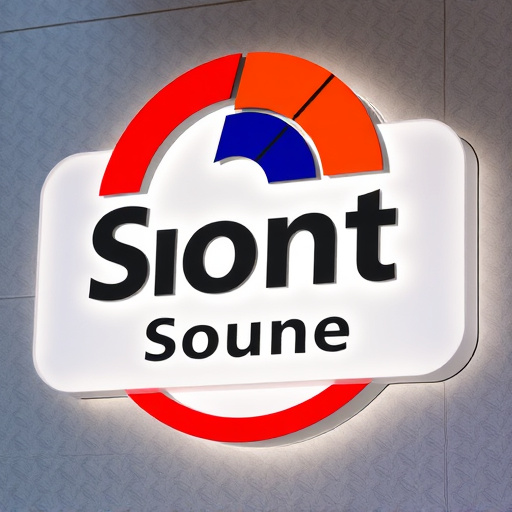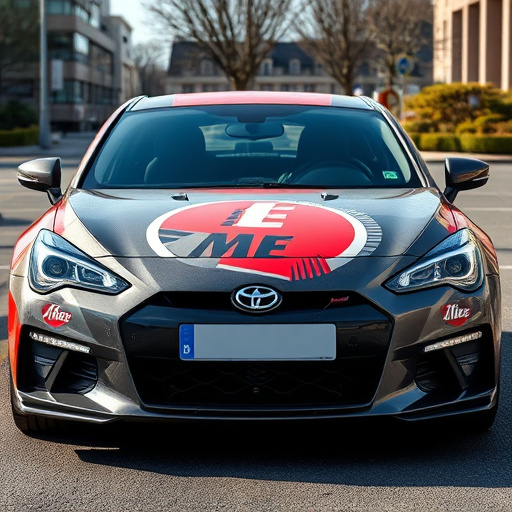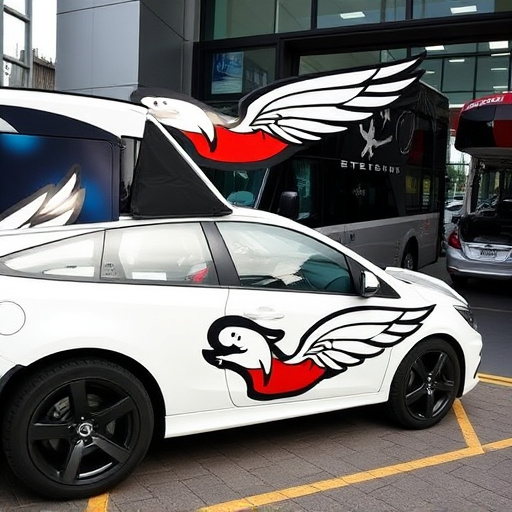Defining core values and purpose is essential for creating a cohesive brand identity design system. Establishing visual language guidelines ensures uniform use of logos, colors, typography, and imagery across all mediums. Consistency in visual elements from websites to vehicle wraps builds recognition, trust, and a lasting impression. Brand identity design remains impactful and clear through reinforced standards, effectively communicating the brand's message.
Creating a cohesive brand identity design system is essential for establishing a strong and recognizable brand. In this article, we’ll guide you through three critical steps: Define Brand Values and Purpose, Establish Visual Language Guidelines, and Implement Consistent Application Across Touchpoints. By following these strategies, you can develop a robust brand identity that resonates with your audience and drives business success. Discover how to ensure your visual elements, messaging, and experiences are aligned for maximum impact in the market.
- Define Brand Values and Purpose
- Establish Visual Language Guidelines
- Implement Consistent Application Across Touchpoints
Define Brand Values and Purpose

Defining your brand’s core values and purpose is a fundamental step in creating a cohesive brand identity design system. This involves delving into what truly makes your brand unique and what it stands for. Consider the essence of your business, its mission, and the impact you want to have on your target audience. Brand values should reflect the character of your company, such as innovation, sustainability, or customer satisfaction. For instance, if you’re in the car customization and vehicle protection industry (like window tinting services), your brand purpose could be to enhance the aesthetic appeal and security of vehicles while offering personalized experiences to each client.
This foundational step ensures that every design decision aligns with your brand’s essence. When designing a brand identity, carry these values through all visual elements—from logo and color palettes to typography and imagery. This consistency will create a recognizable and memorable brand, effectively communicating your purpose to your audience, whether it’s for vehicle customization or any other service-based industry.
Establish Visual Language Guidelines

To create a cohesive brand identity design system, establishing visual language guidelines is a foundational step. This involves defining a set of rules and principles that govern how your brand’s elements—from logos to color palettes, typography, and imagery—should be used consistently across all touchpoints. Think of it as crafting a universal vocabulary for your brand, ensuring every visual element communicates the same message and values. These guidelines should cover everything from do’s and don’ts of design to specific applications for various media, including digital interfaces, print materials, packaging, and even merchandise.
Just as important in this process are considerations beyond aesthetic preferences, such as functional needs—including protective coatings like paint protection film for vehicles or heat rejection solutions for branded equipment. Integrating these practical aspects into your visual language guidelines ensures that your brand identity design not only looks great but also serves its intended purpose across different contexts and industries.
Implement Consistent Application Across Touchpoints

A vital component of establishing a robust brand identity design system is ensuring consistency in its application across all touchpoints. This means that your brand’s visual elements, including logos, color palettes, typography, and imagery, must be used uniformly across various mediums such as websites, marketing collateral, packaging, and even decorative items like vinyl wraps and protective coatings. For instance, if your brand colors are vibrant and bold on your website, they should maintain the same intensity and harmony when printed on brochures or showcased in a window tinting display.
Consistency creates a cohesive visual language that instantly resonates with your audience. It builds familiarity and trust, making your brand more recognizable and memorable. This is particularly important for physical touchpoints like vehicle wraps, where a well-designed graphic can be a powerful mobile advertisement. By maintaining the same design standards across digital and tangible assets—including any decorative or protective coatings—you reinforce your brand identity, ensuring that your message remains clear and impactful no matter where it appears.
Creating a cohesive brand identity design system requires a strategic approach. By first defining your brand’s core values and purpose, you establish a solid foundation. Implementing visual language guidelines ensures consistency in all visual elements. Moreover, consistently applying these principles across every touchpoint fosters recognition and builds trust with your audience. Adhering to these steps will help you develop a robust brand identity design system that resonates with your target market.














